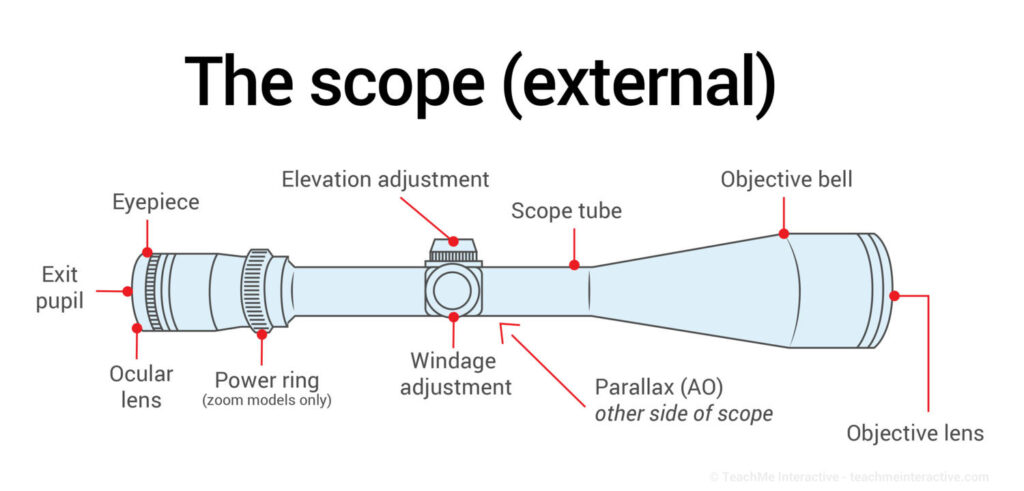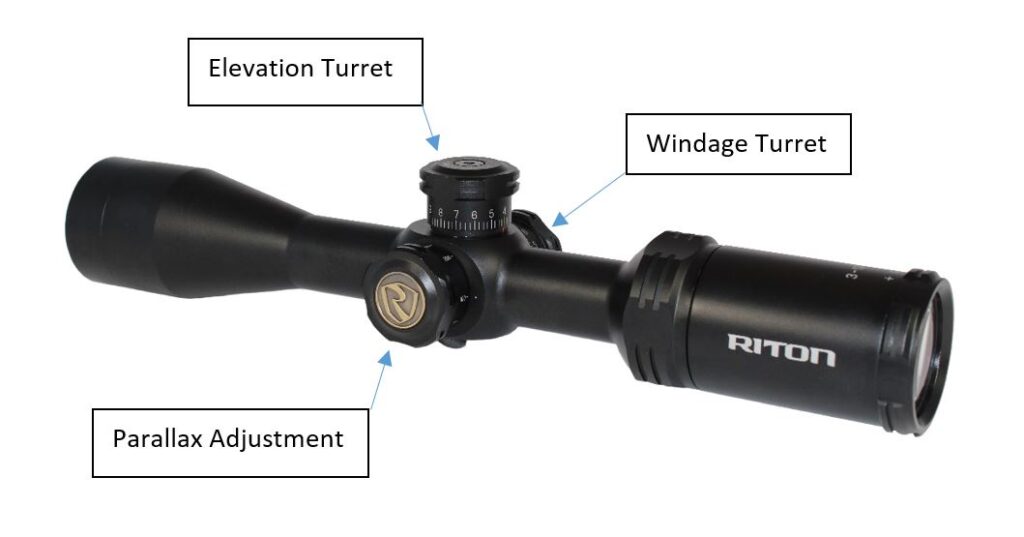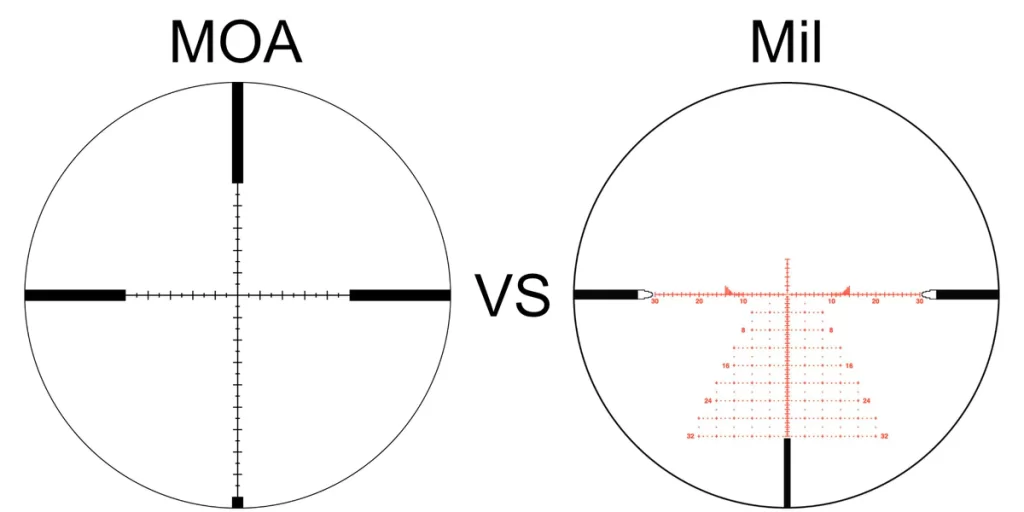Important Aspects of Choosing a Rifle Scope for Optical Sight
With lots of options on the market, which rifle scope is best for you? In this essential guide, we’ll cover everything you need to know about choosing the right rifle scope for your optical sight needs. From magnification to lens coatings and reticles, we’ve got you covered.

1. Magnification Matters
Understanding magnification is crucial when choosing a rifle scope. It’s not about getting as much magnification as possible, but rather choosing the right amount for your specific use.
Here’s a quick guide:
- 1-4x Magnification: Ideal for target shooting (up to 100 yards), stalking small game, or homestead defense.
- 5-8x Magnification: Suitable for target shooting (up to 200 yards), stalking large game, or hunting in closed landscapes like forests and mountains.
- 9-12x Magnification: Recommended for target shooting beyond 200 yards or hunting in open landscapes such as deserts or fields.
Remember, the first number (or range) before the “x” indicates the magnification. Consider your shooting environment and purpose before deciding on magnification.

2. Fixed vs. Variable Power
Choose between fixed and variable power scopes. Fixed power scopes use only one magnification (e.g., 2×30), while variable power scopes offer a range of magnifications (e.g., 3-9×40). Variable power scopes provide versatility in different shooting scenarios, making them a popular choice for most users.

3. Scope Reticles for Precision
Your reticle, or crosshair, is crucial for aiming. Choose a reticle based on your specific use:
- Duplex: Simple crosshair for target shooting or hunting.
- Mil-Dot: Includes dots to estimate target distance, suitable for law enforcement and military.
- BDC: Estimates bullet drop, ideal for long-range shooting.
Also, consider whether the reticle is positioned in the front or rear of the magnification lens.

4. Focal Plane for Precision Shooting
Choose between first focal plane (FFP) and second focal plane (SFP) reticles. FFP adjusts in size with magnification changes, making it suitable for long-range shooters. SFP maintains a consistent size regardless of magnification and is ideal for other uses.

5. Objective Lens Size Matters
The objective lens, located at the end of the scope, is responsible for light transmission. While a larger objective lens generally provides a brighter image, too much can add unnecessary weight and increase the risk of sunlight reflection. Choose the objective lens size based on your firearm’s recoil, shooting range, and lighting conditions.

6. Lens Coatings for Clarity
Lens coatings reduce glare and enhance sight. Most modern scopes are fully multi-coated, offering the best performance. Don’t stress too much about coatings; instead, focus on selecting a proper reticle.

7. Windage and Elevation Turrets
Windage and elevation turrets are knobs for adjusting your scope vertically and horizontally. Ensure they are reliable and produce a distinct ‘click’ sound. Some scopes may also have a parallax adjustment turret to eliminate parallax.
8. Understanding Parallax
Mastering a rifle scope involves tackling the challenge of parallax error. This occurs when the shooter’s eye isn’t perfectly aligned with the scope’s center, causing crosshairs misalignment and hindering accurate aiming. At longer distances, parallax error becomes more pronounced, prompting the inclusion of adjustable parallax or target focus knobs on high-end target scopes.
Understanding every component of a rifle scope is crucial for optimal performance. The Parallax Adjustment knob, typically found on the left side of the scope, is a key tool. By using this knob, shooters can correct parallax error and precisely align crosshairs with the target. This adjustment ensures greater accuracy and successful shots. To achieve this, shooters need to finesse the scope’s focus, making subtle tweaks until the target image and crosshairs align on the same focal plane, irrespective of head position.

9. MOA vs. MRAD
Choose between Minute of Angle (MOA) and milliradian (MRAD) measurement systems. Both are interchangeable, so pick one based on your preference or what your shooting companions use.

10. Eye Relief for Safety
Maintain a safe distance between your eye and the ocular lens to avoid ‘scope bite.’ Choose eye relief based on your firearm’s recoil, with a minimum of 3-4 inches.
11. Red Dot Sights

What is a Red Dot Sight?
Red dot sights use an electric sight system to generate a dot-shaped reticle. There are three types:
- Holographic Sight: Accurate with an excellent field of view, ideal for those with astigmatism.
- Reflex Sight: Non-magnified and easy-to-use, perfect for close-quarters tactics.
- Prism Sight: Offers magnification like a riflescope, providing a larger sight picture than a reflex sight.
Choosing the Right Red Dot Sight
Select a red dot sight based on your needs and budget. If affordability is a priority, reflex sights are a great choice. Consider holographic sights for accuracy or prism sights if you desire a bit of magnification.
Conclusion
Armed with this knowledge, you should be able to select the riflescope that suits your needs. Optmel manufactures top of the line rifle scopes and is a reputable optical sight manufacturer. Contact us today to learn more.

Leave a Reply